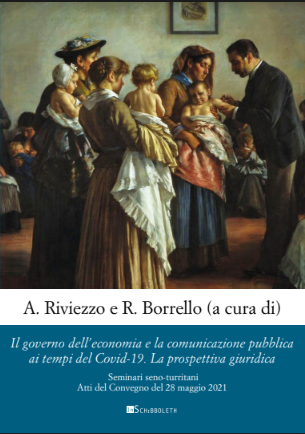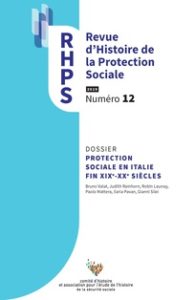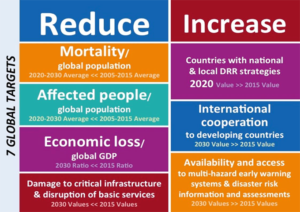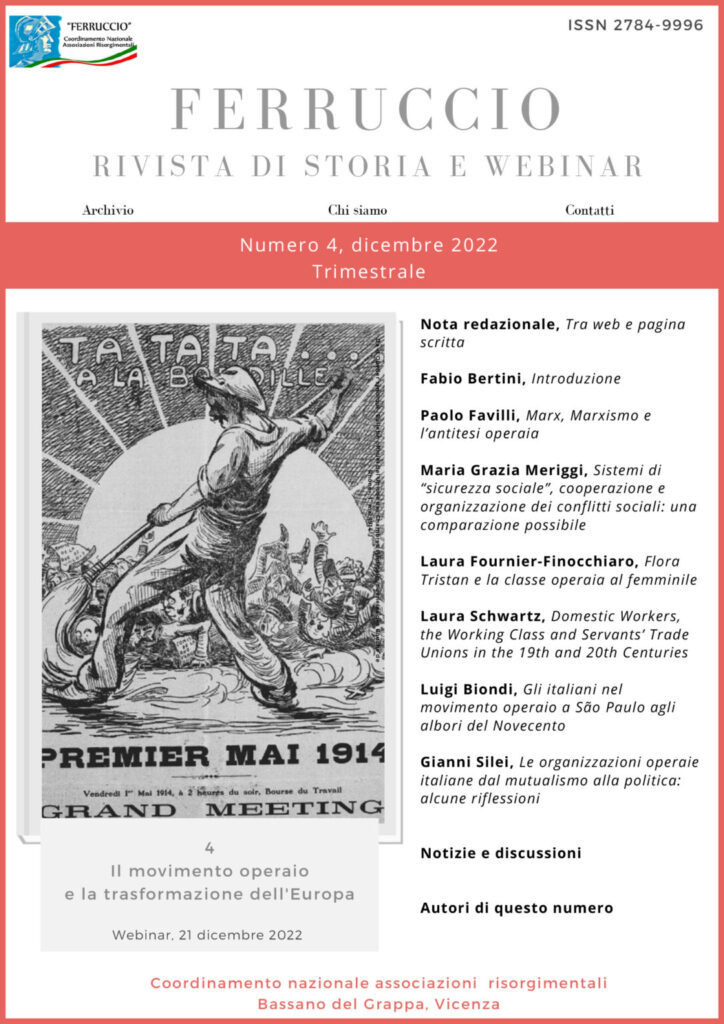Le pandemie influenzali del Novecento
 E’ uscito, all’interno del volume collettaneo Il governo dell’economia e della comunicazione ai tempi del Covid-19 (edito da Inschibboleth, Roma), un mio contributo dal titolo Le pandemie influenzali nel secolo breve: un quadro storico.
E’ uscito, all’interno del volume collettaneo Il governo dell’economia e della comunicazione ai tempi del Covid-19 (edito da Inschibboleth, Roma), un mio contributo dal titolo Le pandemie influenzali nel secolo breve: un quadro storico.
Il volume è curato da Antonio Riviezzo e Roberto Borrello e raccoglie gli atti del Convegno Siena-Sassari del 28 maggio 2021.
https://www.inschibbolethedizioni.com/single-post/9788855293198
Tifosi o Hooligan? Miti e stereotipi del tifo inglese
 E’ uscito su novecento.org, all’interno del Dossier “La Storia dello Sport”, curato da Gianluca Fulvetti e Stefano Pivato, un mio articolo dal titolo Tifosi o Hooligan? Miti e stereotipi del tifo inglese. Malgrado le immagini degli stadi di calcio inglesi mostrino ormai da qualche decennio un pubblico estremamente composto, a tutt’oggi il tifo d’oltremanica è spesso associato al terribile fenomeno degli hooligan. L’articolo si concentra sul tifo violento, la sua evoluzione, narrazione e di conseguenza percezione, a partire dagli epocali cambiamenti che il gioco del calcio ha vissuto in Inghilterra con l’inizio degli anni ’80 dell’Ottocento.
E’ uscito su novecento.org, all’interno del Dossier “La Storia dello Sport”, curato da Gianluca Fulvetti e Stefano Pivato, un mio articolo dal titolo Tifosi o Hooligan? Miti e stereotipi del tifo inglese. Malgrado le immagini degli stadi di calcio inglesi mostrino ormai da qualche decennio un pubblico estremamente composto, a tutt’oggi il tifo d’oltremanica è spesso associato al terribile fenomeno degli hooligan. L’articolo si concentra sul tifo violento, la sua evoluzione, narrazione e di conseguenza percezione, a partire dagli epocali cambiamenti che il gioco del calcio ha vissuto in Inghilterra con l’inizio degli anni ’80 dell’Ottocento.
Il link dove leggere e scaricare l’articolo:
http://www.novecento.org/elenco-dossier/la-storia-dello-sport-7023/
“The Battle for the Valley” su “Diacronie. Studi di storia contemporanea” di giugno
 E’ online il nuovo numero della rivista “Diacronie. Studi di storia contemporanea”. Si tratta di un monografico curato da Eleonora Belloni e da Jacopo Bassi, sul tema Più che un club. Tifoserie e identità storiche.
E’ online il nuovo numero della rivista “Diacronie. Studi di storia contemporanea”. Si tratta di un monografico curato da Eleonora Belloni e da Jacopo Bassi, sul tema Più che un club. Tifoserie e identità storiche.Il contagio della paura
Sul numero di giugno di “Le Scienze/Mind” è uscito un interessante contributo di Leonardo De Cosmo (che ringrazio) dal titolo Il contagio della paura che riporta alcuni passaggi di una mia intervista-dialogo su storia e paure collettive.
PAURA_DECOSMOWelfare State e riforme sociali in Italia negli anni Ottanta
 E’ uscito nel Dossier Protection sociale en Italie fin XIXe – XXe siècles, curato da Bruno Valat e Judith Rainhorn, della Revue d’Histoire de la Protection Sociale (2019/1 n. 12) un mio contributo sulle politiche di riforme e il Welfare State in Italia negli anni Ottanta dal titolo La protection sociale italienne et le système des partis dans les années 1980. Réformisme ou transformisme?
E’ uscito nel Dossier Protection sociale en Italie fin XIXe – XXe siècles, curato da Bruno Valat e Judith Rainhorn, della Revue d’Histoire de la Protection Sociale (2019/1 n. 12) un mio contributo sulle politiche di riforme e il Welfare State in Italia negli anni Ottanta dal titolo La protection sociale italienne et le système des partis dans les années 1980. Réformisme ou transformisme?
Résumé
Les années 80 ont représenté une phase de transition importante pour l’histoire du système de protection sociale en Italie. Au cours de cette décennie, le processus de construction de l’État-providence a donné lieu à quelques réalisations importantes sur l’ensemble du système national de santé. Dans le même temps, en raison du contexte économique national et international et de la situation politico-institutionnelle complexe du pays, l’État-providence italien était au centre d’un débat important sur la nécessité d’une réforme qui concilierait viabilité financière et protection sociale efficiente. L’article retrace la confrontation entre les forces politiques autour de ces thèmes, le chemin difficile des nombreux projets de réforme et les réalisations concrètes mais limitées qui en découlèrent.
Abstract
The Italian social protection system went through a major transition phase in the 1980s. Over the course of the decade, the welfare state construction process gave rise to several important achievements for the entire national health system. At the same time, owing to the national and international economic environment and the country’s complex political and institutional situation, the Italian welfare state was at the heart of the substantial debate on the need for reform that would strike a balance between financial viability and efficient social protection. The article explores the confrontation between political powers relative to these themes, the difficulties involved in the implementation of numerous reform projects, and the concrete but limited achievements made.
Ecco il link alla RHPS: https://www.cairn.info/revue-d-histoire-de-la-protection-sociale-2019-1.htm
Sorget – La gestione del rischio di catastrofi: alcune riflessioni a cinque anni da Sendai
 La rivista International Journal of Disaster Risk Science ha pubblicato un numero speciale dedicato al quinto anniversario della Terza Conferenza Mondiale delle Nazioni Unite che, su richiesta dell’Assemblea generale ONU e con il sostegno dell’Ufficio delle Nazioni Unite per la Riduzione del Rischio di Disastri (UNISDR), si svolse a Sendai nel 2015 e che sancì il passaggio da un approccio basato sulla “gestione delle catastrofi” ad uno imperniato sulla “gestione del rischio di catastrofi”, attraverso il ruolo di primo piano riconosciuto alle attività di prevenzione.
La rivista International Journal of Disaster Risk Science ha pubblicato un numero speciale dedicato al quinto anniversario della Terza Conferenza Mondiale delle Nazioni Unite che, su richiesta dell’Assemblea generale ONU e con il sostegno dell’Ufficio delle Nazioni Unite per la Riduzione del Rischio di Disastri (UNISDR), si svolse a Sendai nel 2015 e che sancì il passaggio da un approccio basato sulla “gestione delle catastrofi” ad uno imperniato sulla “gestione del rischio di catastrofi”, attraverso il ruolo di primo piano riconosciuto alle attività di prevenzione.
Introdotto da un contributo di Ilan Kelman, il numero presenta una serie di riflessioni, da prospettive diverse ed autorevoli, sul Sendai Framework for Disaster Risk Reduction 2015-2030 e sui suoi sviluppi. Particolarmente interessante, in quanto incentrato sulle emergenze sanitarie, pandemie comprese, il contributo a più voci di Natalie Wright, Lucy Fagan, Jostacio M. Lapitan, Ryoma Kayano, Jonathan Abrahams, Qudsia Huda e Virginia Murray.
Tutti gli articoli possono essere scaricati gratuitamente dal link: https://link.springer.com/journal/13753/11/2
Europe and its Fears in the Age of Anxiety
 E’ online su De Europa – European and Global Studies Journal del Dipartimento di Culture, Politica e Società dell’Università di Torino, in un numero dedicato al tema European Anxieties and Worries (guest editors: Giovanni Borgognone e Giuseppe Sciara), un mio contributo dal titolo Europe and its Fears in the Age of Anxiety: Historiography and Perspectives.
E’ online su De Europa – European and Global Studies Journal del Dipartimento di Culture, Politica e Società dell’Università di Torino, in un numero dedicato al tema European Anxieties and Worries (guest editors: Giovanni Borgognone e Giuseppe Sciara), un mio contributo dal titolo Europe and its Fears in the Age of Anxiety: Historiography and Perspectives.
Abstract
It is a common belief that the dimension of fear, increasingly used by media by borrowing expressions such as “Society of fear”, “Politics of fear” or “Culture of Fear”, has emerged as a collective feeling in contemporary society after the attacks on the Twin Towers of 11 September 2001. In reality, Fear was already present in Western collective sensibility, as already happened in the course of history during phases characterised by profound economic, political or social changes, in close connection with a widespread sense of uncertainty and anxiety.
This contribution provides a general view, from a historical perspective, of the theme of fear and more generally of the history of emotions in the West, with particular attention to the European case study, first of all reconstructing the evolution of the historiographical debate, from the first reflections by Lucien Febvre, advanced during the rise of totalitarianism in Europe, to the progressive affirmation of studies on this issue, in particular from the second half of the Seventies, until the wide and differentiated recent literature. After comparing the different methodological approaches, describing the different types of sources used by scholars and posing the question of which social actors to study to better understand the characterizing traits of a collective feeling so important but also so elusive, the essay finally poses the issue of the periodization of collective fears – proposing a subdivision of the latter between short-term fears and long-term fears – and their dynamics during the twentieth century and the beginning of the new millennium.
Keywords: Fear, History of emotions, History of Fear, Europe, Social History, Cultural History.

